- Home
- Lord Dunsany
The Curse of the Wise Woman
The Curse of the Wise Woman Read online
THE CURSE OF THE WISE WOMAN
LORD DUNSANY
With a new introduction by
MARK VALENTINE
VALANCOURT BOOKS
The Curse of the Wise Woman by Lord Dunsany
First published New York: Longmans and London: Heinemann, Oct. 1933
First Valancourt Books edition 2014
This edition © 2014 by Valancourt Books
Introduction © 2014 by Mark Valentine
Published by Valancourt Books, Richmond, Virginia
http://www.valancourtbooks.com
All rights reserved. The use of any part of this publication reproduced, transmitted in any form or by any means, electronic, mechanical, photocopying, recording, or otherwise, or stored in a retrieval system, without prior written consent of the publisher, constitutes an infringement of the copyright law.
Cover: Adapted from the original jacket art from the 1933 Heinemann first edition by Heather “Herry” Perry (1893-1962)
INTRODUCTION
Lord Dunsany is mostly read now for his ornate and fantastical tales of gods and the unfortunate mortals who encounter them. They are written in some of the richest, most sonorous language ever used in English, driven by the stately rhythms of the King James Bible. These tales achieve a remarkable combination of strange fancy and worldly irony: exotic worlds, described in an archaic vocabulary enhanced by resonant invented names and words, prove still to be full of perennial human follies. Starting with The Gods of Pegana (1905), Dunsany published about ten volumes of these bizarre and exquisite pieces, together with plays in a similar vein.
But it must have become obvious to him that there was a limit to how often he could revisit these dream realms, journeying across the border from the “fields we know” to the outer marches of faery. It has also been speculated that the First World War, in which he served as a Captain in the Royal Inniskilling Fusiliers, caused him to put an end to these fey visions. Whatever the reason, he soon began writing instead longer works; novels and romances.
At first, as in The King of Elfland’s Daughter (1924), these were set in a similar milieu to his earlier tales, and it is true that Dunsany never left the haunts of faery altogether in any of his work. But gradually he began to write more of “the fields we know” than of the fields beyond: and, in particular, he turned to his own country, Ireland, for inspiration. The Curse of the Wise Woman (1933), written in his early fifties, is the finest work he produced from this new (and old) source: and arguably it is Dunsany’s most haunting and thoughtful book.
Edward John Moreton Drax Plunkett (1878-1957) succeeded to the title as the 18th Lord Dunsany at the young age of 20 in 1899, and also to the family home of Dunsany Castle. This is situated not far from one of Ireland’s most celebrated monuments, the Hill of Tara, citadel of the ancient High Kings of Ireland: he grew up on the very threshold of legend and romance. Dunsany was a man of prodigious energy and many interests. Some of these were fairly conventional for his class and era: soldiering, hunting, cricket, socialising. But others were much less so. He was a keen chess player, and (despite his hunting) an advocate of protection for animals. And, most of all, he was a dedicated writer: his work in the end embraced stories, poetry, plays, autobiography, travel essays, lectures and much else besides.
This literary work brought him into contact with artistic and bohemian circles and in particular to an acquaintance with many of the leading figures of the Irish Renaissance, including W. B. Yeats, the poet and mystic ‘Æ’ (George William Russell), Oliver St. John Gogarty, Lady Gregory and Padraic Colum. His plays were performed at the Abbey Theatre, Dublin, the centre of this circle. But he also valued the acquaintance of lesser-known figures. He championed the impoverished poet Francis Ledwidge, a grocer’s boy whose verses he discovered, and he found a particular affinity with the ex-miner and English artist Sidney Sime, who illustrated his early books: they worked so well together that for one of the volumes Sime made the pictures first, and Dunsany wrote the stories to go with them. Sime visited Dunsany Castle several times, where his original cast of mind was appreciated. Asked for the time once, he replied “Later than it ever was”.
Although Dunsany mingled with the leading Irish literati of his day, he seems not to have been considered fully a part of their circle. He recalled in his autobiographical volume The Sirens Wake (1945) that the immediate stimulus for writing The Curse of the Wise Woman may have been—though he is not sure—a reproach from Yeats that he never wrote about Ireland. There was in a literal way some justice in the comment, for Dunsany’s earlier dream-world work barely had its soles on any part of the earth, still less a particular locality. On the other hand, in its celebration of gods and heroes, quests and journeys, it certainly did have some kindred with early Irish wonder stories and sagas, and Yeats might have been expected to see that better. In any event, Yeats welcomed The Curse of the Wise Woman and acknowledged that Dunsany could now be regarded as a more fully Irish writer.
Beatrice, Dunsany’s wife, recorded in her diary in 1933 that her husband “wrote his Irish novel in three and a half breathless months: bits of it have been in his mind for years and I never let it be forgotten for too long and then it came suddenly” (Mark Amory, Lord Dunsany: A Biography, 1972). The long thinking that went into the novel is evident in its depth. There is nothing tentative about Dunsany’s evocation of Ireland in the book. It is imbued with every significant element of the country: its politics, its religion, its gentry and peasantry, its hills and its bogs, its skies and its streams, its shrewdness and its whimsy, all the bleak realities of its visible world, and the hovering presence of its otherworld. All this was drawn from Dunsany’s direct experience: as Mark Amory notes, “The story—of a boy spending his holidays from Eton in Ireland shooting snipe and grouse on the bogs with the keeper, his mother dead, his father soon to disappear, is the most autobiographical of his books.”
We may also sense that there was a careful and deliberate choice about Dunsany’s method of narration. For the book is written as the memoir of an Irishman in exile, far away in another country that might seem marginal as well as liminal. He has been made a diplomatic minister of the Irish Free State, a servant of the newly independent nation. This is perhaps a Dunsany that might-have-been, and he must have meant to imply that he could be as loyal to the new Ireland as any more flamboyant Celt. But his narrator is also lonely and still possessed by his past, and here Dunsany was acknowledging something of his own stature, as an Irishman of letters never quite accepted because of his background: his class, his Anglo-Irish origins and assumed allegiances: and perhaps also, more personally, because of his idiosyncracies and his elaborate, exotic fantasy world.
The first study of the Irish peer, Lord Dunsany: King of Dreams (1959) by the American hostess and traveller Hazel Littlefield suffers from a somewhat breathless style and a rather particular focus, chiefly related to the occasions of the author’s own social associations with Dunsany. However, it has some sound observations, including this passage very relevant to the writing of The Curse of the Wise Woman: “the Irish heart of him loved the wildness of the bog and the moors, the long glimmering evenings with a soft wind in the grasses, and storm clouds, like ghosts of gods, passing over the mountains. He knew how it was with those who have a true love for any piece of earth where their roots have gone deep into the soil.” That country is a powerful presence in the book.
In the two young friends whose journeys we witness, and even more so in the mother of one of them, the wise woman of the title, we see this understanding of the call of the land lyrically conveyed. But Dunsany had another knowledge too, an insight into the nature of spiritual exile, and that is just as keenly evoked in the book. I
t is this that gives the story its delicate melancholy, its sense of quiet tragedy, an intangible impression lying like a pale watermark within all its pages. The book is in one aspect an elegy for, as the narrator says at the outset, “an Ireland that they tell me is quite gone”.
We can date the beginning of the exile’s recollections of his youth by a reference to a particular event: the fall of Khartoum and the death of General Gordon, in 1885, when the narrator says he was sixteen. This tragedy made a dramatic impression on the British public, and indeed Dunsany’s fellow writer of supernatural fiction, Arthur Machen, whose work he admired and introduced, recalled that he was so moved by it that he announced the news to his clergyman father in ancient Greek, as it seemed the only fitting tongue. Many felt that Gordon had been betrayed, and that a strange soul had gone from the world (a sense that not even Lytton Strachey’s satirical essay on him in Eminent Victorians quite dispelled). A mourning for lost noblesse is therefore hovering in the book from the start, even around a passing point in chronology, and it is soon augmented by what we learn of the boy’s background.
The young Charles James Peridore, who we know is later to become the lonely exile, is a delicately changed version of Dunsany himself. He is not the heir to a castle and an ancient title, but to a diminished estate and a Jacobite dukedom (and indeed Jacobite forenames), romantic but honoured only clandestinely. The Old Cause and the Old Faith are still observed in the house, and this makes him some degrees closer to the people of the land. One of the great appeals of the book is the subtly depicted friendship between this son of a lost cause and Tommy Marlin, the peasant ‘bog-watcher’ who is also the son of the local seer, the prophetess Mother Marlin. Whatever tense politics may be stalking the land—and they are keenly depicted in the thrilling opening passages—and whatever peculiar magic may be living in the marshes, the book sticks close to the alliance between these two different young men. Dunsany understands the simplicity and stolidity of such comradeship, found and fostered in long walks over the marshes and the stalking of the wildfowl in the watery waste.
The strength of The Curse of the Wise Woman over Dunsany’s earlier fantasies and fables is this concern with human qualities. Edward H. Bierstadt, studying Dunsany’s plays, wrote in 1919: “His place is that of pure thought, devoid of emotion, so neither in his gods, nor in the world they rule do we find a trace of passion either human or divine.” He praised the musical language of his dramas, but noted, “not once do we know the poignancy of the familiar. He realises but does not experience: he perceives but does not feel.” Others thought the same of his tales: they were sonorous but heartless. There are in fact very fierce motivations in the gods, heroes and desparadoes of his stories: love, longing, lust for glory, jealousy, greed. However, mostly the mortals in that earlier work are ethereal dreamers, roaming among ruined cities or fabulous palaces; or schemers who think, unwisely, that they can steal something from the gods. They may, though, seem formal and stylised, as in the old sagas, and not fully fashioned from the weft of human fabric.
By contrast, all the individuals in the novel have complex dimensions to them. The boy of the marsh cannot read letters, but he can read the skies and the mosses. The taciturn steward knows more than he ever tells. The dark-haired assassin looks to the well-being of the man whose father he would have murdered. Those whose mission it is to kill cannot defy a holy relic. With gentle irony, Dunsany celebrates the ambivalences and contradictions and paradoxes in any mortal worth their salt.
These may also be felt in the main themes of the novel. A contemporary critic doubted if it would do well because the male readers who would like the shooting and hunting scenes would not like the mystical passages, and those who liked these would be deterred by the blood sports. In fact, as Dunsany knew, that might not only be true of men: Laura, the young woman that Charles James Peridore woos in the book, is a keen Artemis of the chase, and the nearest she gets to the mystical is the hope that heaven will prove to be “Galloping down wind for ever”.
But it is certainly true that by today’s standards the devotion to wildfowling and foxhunting that is central to the book may dismay many readers, for all that they appreciate the closeness to the land, the keen observation of birds and animals, that accompanies them. Dunsany had addressed head on the question of why he, so devoted to campaigns against cruelty to animals (he particularly fought against the practice of docking dogs’ tails), should also take pleasure in chasing and slaying them. “Of course I am inconsistent,” he admitted, “and when you consider the power of the pulls of heredity and environment upon all of us, like the sun and the moon pulling different ways at the tides, we must all be as inconsistent as the sea.” His biographer Mark Amory thought that “he was aware of the paradox that those who really love the country are frequently those most dedicated to killing the creatures that live in it” and that this always “nagged at him”. It was such human inconsistencies that he put into his book, and they are a strong part of its compelling authenticity.
But if Dunsany had shown he could write convincingly in a naturalistic way, far from his mannered fantasies, he had certainly not deserted the unearthly entirely. The hovel of Marlin’s mother, though it is of ragged thatch and reeks of peat smoke, is as much on the edge of the world as the uncanny cottages in his tales of dream visions. It is the last place before the bog begins. The bog itself, so broodingly evoked, is itself a marginal land, where we understand that the rules are not the same as in the settled lands. And at the end of it, so her son, the bog-watcher Tommy Marlin says, there is the sea, and beyond the sea is Tir-nan-Og, the pagan Irish otherworld to which, in peril of his soul, he has devoted himself.
This paradisal, but dangerous, realm sometimes advances further towards the human domain, and can be seen in aspects of mortal country: in the blossom on an apple bough, for instance, or in the lying of snow or the glinting of dark light in the pools of the marshes. Dunsany had told Hazel Littlefield, she recalled: “In the blood of man there is a tide, an old sea-current rather, that is somehow akin to the twilight which brings rumours of beauty from however far away, as driftwood is found at sea from islands not yet discovered.” These rumours of beauty—and mystery—are rarely more beautifully expressed than in the glimpses of Tir-nan-Og that haunt the book, shadowing the natural world throughout with the suggestion of a world beyond.
Nor is this the only supernatural element in the book, for in Marlin’s mother he memorably depicts a witch who listens to the North Wind and has visions of the future, visions where the renewed Ireland will be “free again” and where the emissaries of far-flung empires and republics, and also seafarers and merchants, poets and dreamers will flock to its shores. It is as if, through her, Dunsany sees his original worlds of marvel meshing with an idealised version of the country of his birth. Before that can come into being, though, there are struggles to be won against those with narrower souls: and in the final part of the book, Dunsany achieves a most subtle and ambiguous splicing of the natural and the supernatural.
It was probably this dimension that most appealed to John Masefield, himself the author of books where magic is abroad in the land, when he chose the book as the winner of the annual Harmsworth Award for “the best work of imaginative prose by an Irish author”, and indeed the book was generally well received. Dunsany went on to write over twenty more books, including novels where he explored again the Ireland he knew, its land, its people, and its legends. But it is fair to say that he never quite achieved again the fine mingling that gives The Curse of the Wise Woman its particular allure.
Like the boy in his book, Dunsany could never keep away from the red bog for long, and he was out unsuccessfully seeking snipe just a few days before his death in the Autumn of 1957. He left his gold watch and chain to his gamekeeper of thirty years, and a poem for the birds he had so long pursued, telling how they would rejoice at his passing. In his going, as in his life, he was no less a glorious paradox.
Mark Valentine
September 17, 2014
CHAPTER I
I am in a foreign town now, with little to do, and with nothing at all that is so interesting and soothing as letting my memory roam. My memory is not what it was. If Monsieur Alphonse, as I call him, for I can never quite get his queer Balkan surname, were to suddenly ask me what day it was, I might not be able to tell him, and yet the scenes of my youth are as clear as ever they were, and many men and things you may see in the course of a day that you will not remember as vividly that same evening as I remember the things of fifty years ago. Monsieur Alphonse is almost the only man I ever see to talk to: he comes in nearly every day to have a glass of absinthe with me; and when he goes I sit and think of the past. And only the other day, while the sparrows were all chirruping outside my window in sunlight, and my memories were even more vivid than usual, it struck me that it might be as well to write them down, for they are memories of an Ireland that they tell me is quite gone. And it seems to me that if the scenes of those days be allowed to be quite lost, the world will miss a memory of a beautiful and happy country, and be the worse for that. Or was it a sad and oppressed country, as some say? I don’t know. It didn’t seem so to me.
Well then, my name: Charles James Peridore. The date: I do not remember. But I remember hearing the names of Gordon and Gladstone, and one day the loss of Khartoum flashed from the news; and I must have been about sixteen. Well, somewhere about that time; for it is not the date that is vivid and bright in my mind as the leaves of the lime-tree just outside my window, but the things I saw as a boy; somewhere about that time I was sitting before the fire with my father late one winter’s evening in our house called High Gaut. Of the date of the house I can tell you nothing accurate. It was built by a forbear of ours who was a historical character, but it is just about that time that the history of Ireland begins to be fabulous, so that it is truer to tell you merely that the house was very old. Of the period of its furniture and its fixtures I can tell you at once: it was no period at all. As chairs and such things wore out they were replaced in different generations, and the only thing that they all had in common was that they were all bought by the same family. There is a right and a wrong place for antiquity: it is right in walls, wrong in carpets; wrong too in curtains and wall-paper and hearth-rugs. We had antiquity everywhere. My father kept only one housemaid to do the work of the large house, and though she did what she could, it was clear in every room that the spider was gaining. And another memory I have of that day, that is almost as clear to my mind as the memory of my father and myself before the fire in the library; and that is the picture of a long man in a frayed black coat that came below his knees, galloping down the street of a village in which all the houses were thatched, and all had low white walls shining in sunlight. I should not call it a memory, because I never saw it, but I pictured the scene so clearly when I was young, when the man came up to High Gaut, and said: “I galloped all the way from Lisronagh to tell you that the geese are in on the bog,” that the picture is still here among my memories. And a keen joy stamped the picture clear on my mind, for shooting was the greatest adventure I then had known, and a pheasant the largest bird I had ever shot; and that grey traveller the goose, with his wariness, his rarity and romance, was a greater prize to me then than any that the world could offer me now. And my father would not let me go to Lisronagh, because I had not done my holiday task. It was a book of Dickens, and everyone else in my division at Eton would do it in the train going down from Paddington. I see now that fifty minutes in a crowded railway carriage may not be enough in which to read one of Dickens’ novels; but the feeling that my father did not understand is deeper and older and stronger. Yes, it is with me yet.

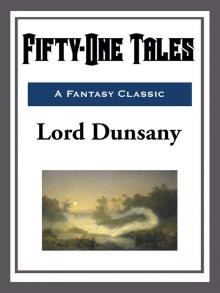 Fifty-One Tales
Fifty-One Tales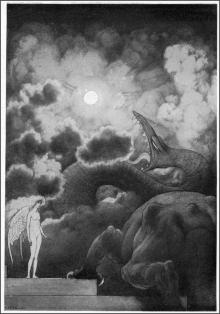 Time and the Gods
Time and the Gods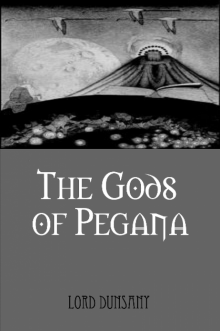 The Gods of Pegana
The Gods of Pegana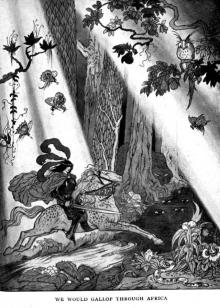 A Dreamer's Tales
A Dreamer's Tales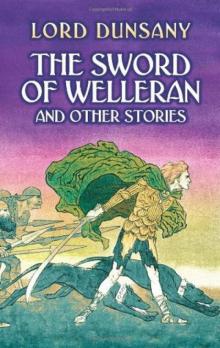 The Sword of Welleran and Other Stories
The Sword of Welleran and Other Stories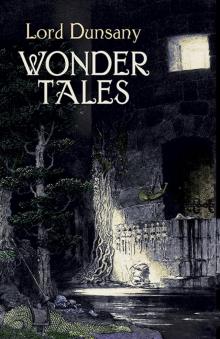 Tales of Wonder
Tales of Wonder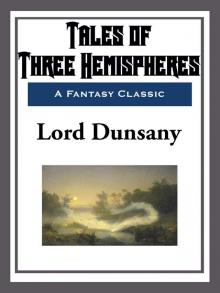 Tales of Three Hemispheres
Tales of Three Hemispheres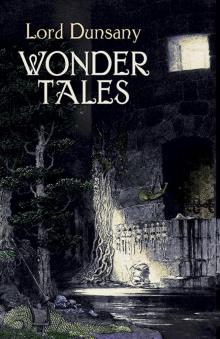 The Book of Wonder
The Book of Wonder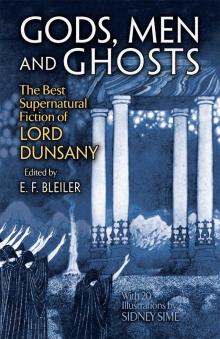 Gods, Men and Ghosts
Gods, Men and Ghosts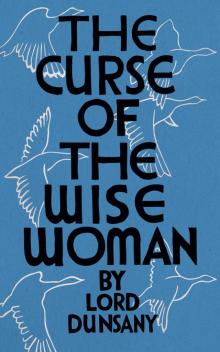 The Curse of the Wise Woman
The Curse of the Wise Woman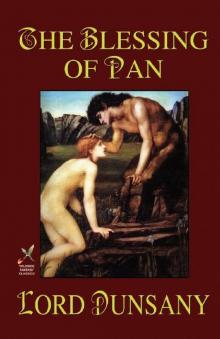 The Blessing of Pan
The Blessing of Pan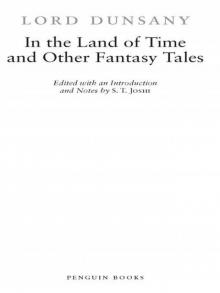 In the Land of Time
In the Land of Time